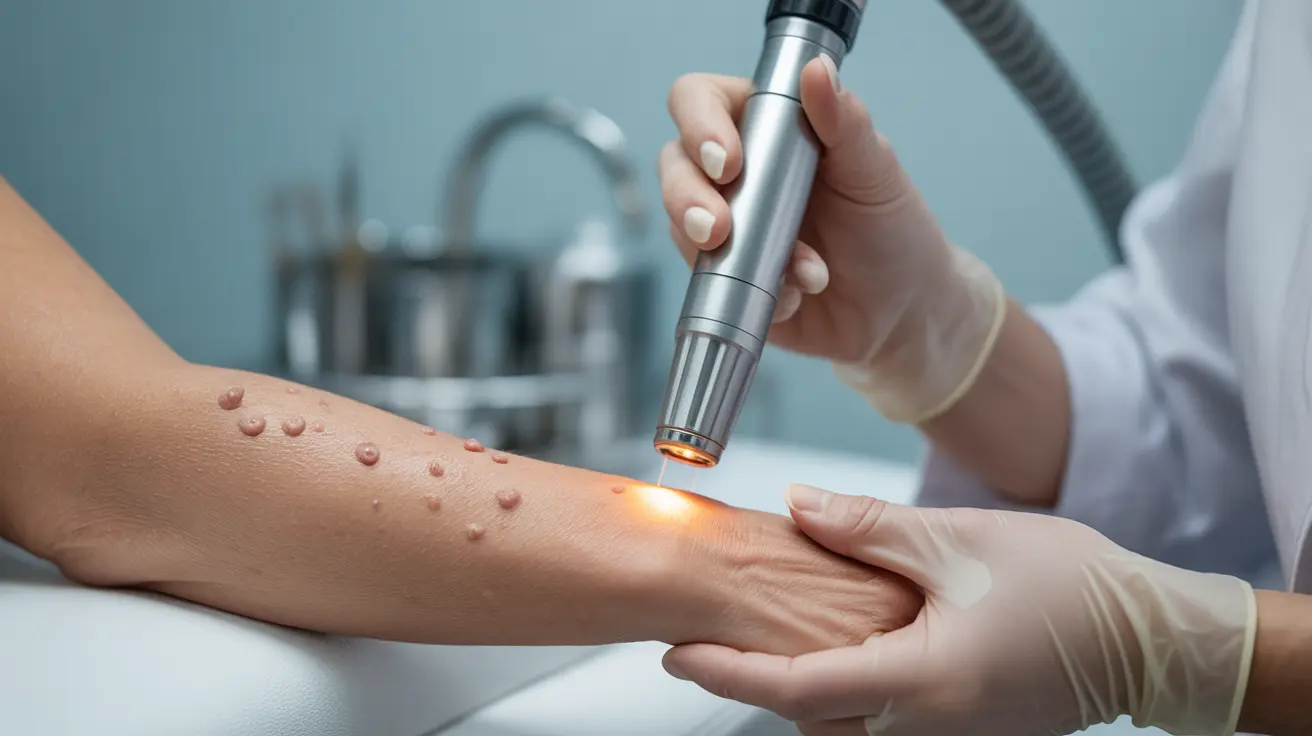Keratosis pilaris (KP) can be a frustrating skin condition, causing rough, bumpy patches and redness that many find difficult to treat with traditional methods. For those seeking more effective solutions, laser treatment for keratosis pilaris has emerged as a promising advanced therapeutic option. This comprehensive guide explores how laser therapy can help manage KP symptoms and what patients should know before pursuing this treatment.
Understanding the role of laser therapy in treating keratosis pilaris is crucial for making informed decisions about your skin care journey. While conventional treatments like topical creams and exfoliants can help, laser treatments offer a more targeted approach to addressing both the texture and redness associated with KP.
How Laser Treatment Works for Keratosis Pilaris
Laser therapy targets two primary aspects of keratosis pilaris: the buildup of keratin that causes bumps and the associated redness or inflammation. Different types of lasers work in specific ways to address these concerns:
Vascular Laser Treatment
These lasers specifically target the blood vessels causing redness and inflammation in KP-affected areas. They work by delivering concentrated light energy that's absorbed by hemoglobin, helping to reduce visible redness and improve skin appearance.
Resurfacing Laser Treatment
Resurfacing lasers focus on smoothing the skin's texture by addressing the keratin buildup characteristic of KP. These treatments help remove dead skin cells and stimulate collagen production, potentially leading to longer-lasting improvements in skin texture.
Treatment Process and Timeline
The journey through laser treatment for keratosis pilaris typically involves several steps and considerations:
- Initial consultation and skin assessment
- Treatment planning based on KP severity
- Multiple sessions scheduled several weeks apart
- Post-treatment care and maintenance
Most patients require 3-6 treatment sessions to achieve optimal results, though this can vary based on individual cases and the specific type of laser being used.
Safety Considerations and Skin Types
While laser treatment for keratosis pilaris is generally safe, certain factors need careful consideration:
- Skin type and tone evaluation
- Previous treatment history
- Current medications
- Expected recovery time
- Potential temporary side effects
Patients with darker skin tones require special consideration to ensure the laser settings are appropriate and minimize any risk of pigmentation changes.
Combining Treatments for Optimal Results
Many dermatologists recommend a comprehensive approach to treating keratosis pilaris, combining laser therapy with other treatments:
- Prescription topical treatments
- Gentle exfoliation
- Moisturizing routines
- Sun protection
- Maintenance sessions as needed
Treatment Costs and Insurance Considerations
The investment in laser treatment for keratosis pilaris varies based on several factors:
- Geographic location
- Type of laser used
- Number of sessions needed
- Provider expertise
- Facility fees
Frequently Asked Questions
What types of laser treatments are most effective for treating keratosis pilaris, and how do they work on rough skin or redness? Vascular lasers like pulsed dye laser (PDL) are most effective for treating redness, while resurfacing lasers such as fractional lasers work best for texture issues. These treatments work by either targeting blood vessels causing redness or breaking down excess keratin causing roughness.
How many laser therapy sessions are typically needed to see improvements in keratosis pilaris, and how long do results last? Most patients require 3-6 sessions spaced 4-6 weeks apart for optimal results. Results can last several months to a year, though maintenance sessions may be needed. Individual results vary based on severity and lifestyle factors.
Are there any major risks or side effects associated with laser treatment for keratosis pilaris, especially for people with darker or sensitive skin? Common side effects include temporary redness, swelling, and sensitivity. People with darker skin tones may face a slightly higher risk of post-inflammatory hyperpigmentation, making proper laser selection and settings crucial. Working with an experienced provider who understands different skin types is essential.
Can laser therapy for keratosis pilaris be combined with other treatments, such as creams or chemical peels, for better results? Yes, laser therapy can be effectively combined with other treatments. Many dermatologists recommend using gentle exfoliating products and moisturizers between sessions. However, timing and coordination of treatments should be carefully planned with your healthcare provider.
Is keratosis pilaris laser treatment covered by insurance, and what is the usual cost compared to at-home or prescription remedies? Laser treatment for keratosis pilaris is typically considered cosmetic and therefore not covered by insurance. Costs range from $300-$800 per session, making it more expensive than traditional treatments. However, some patients find the long-term results justify the investment compared to ongoing use of other remedies.




